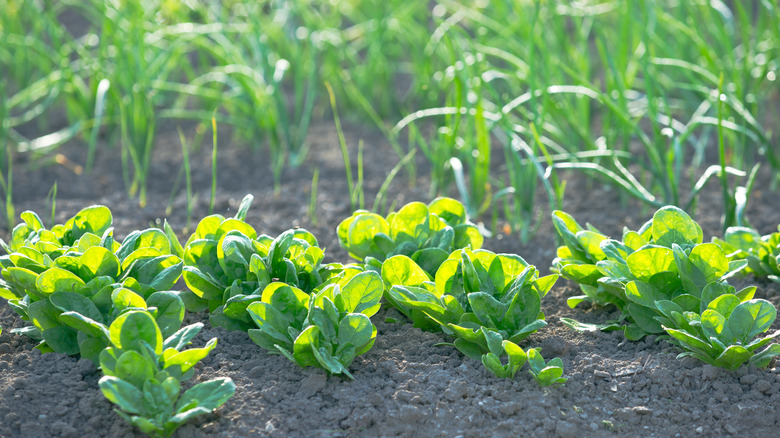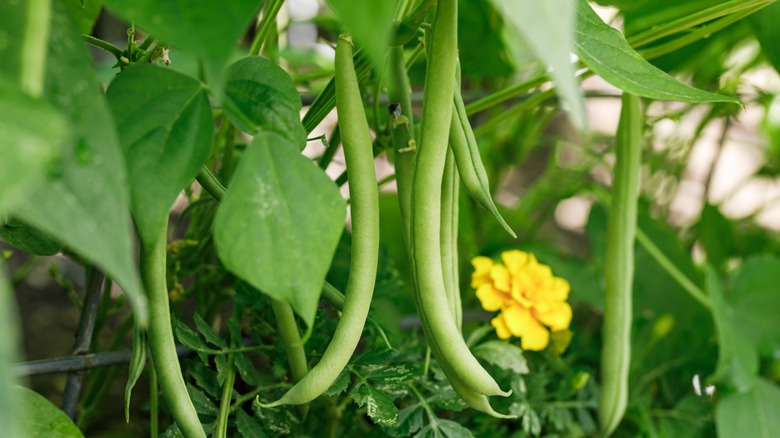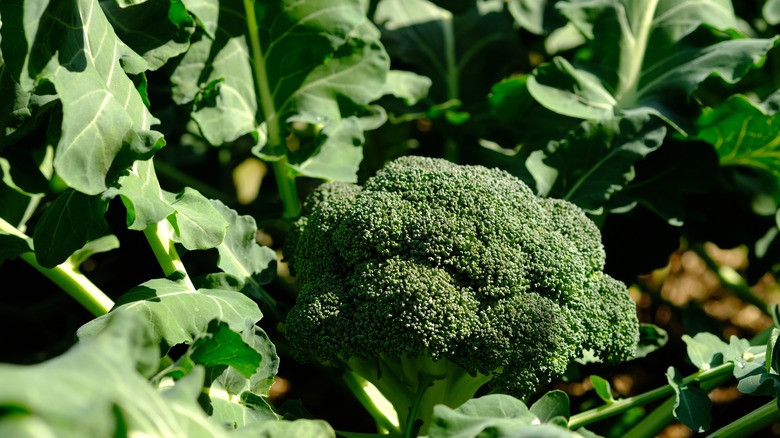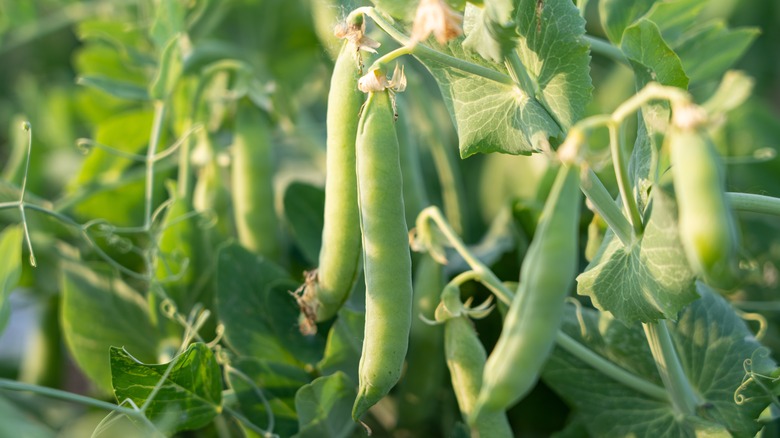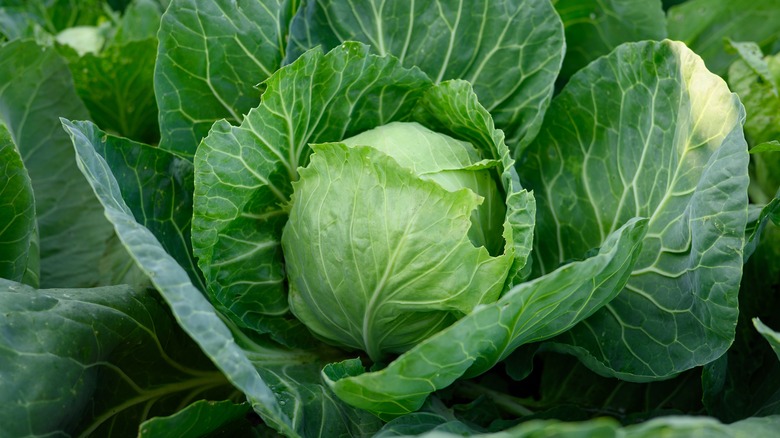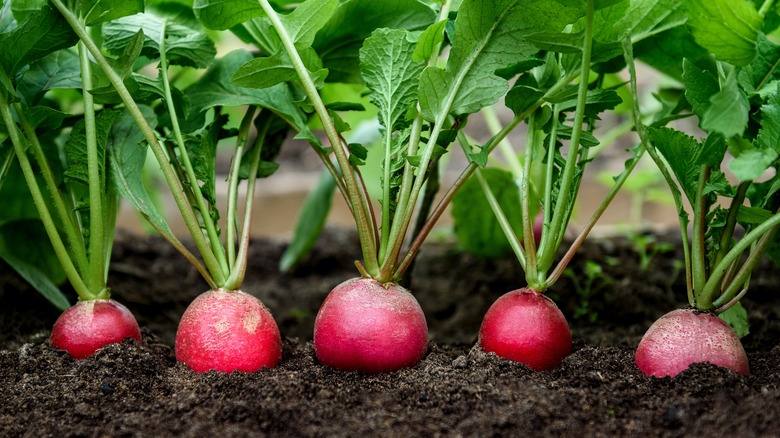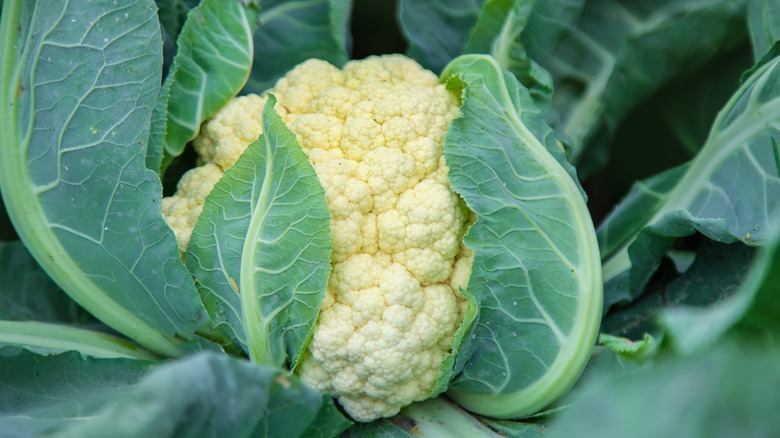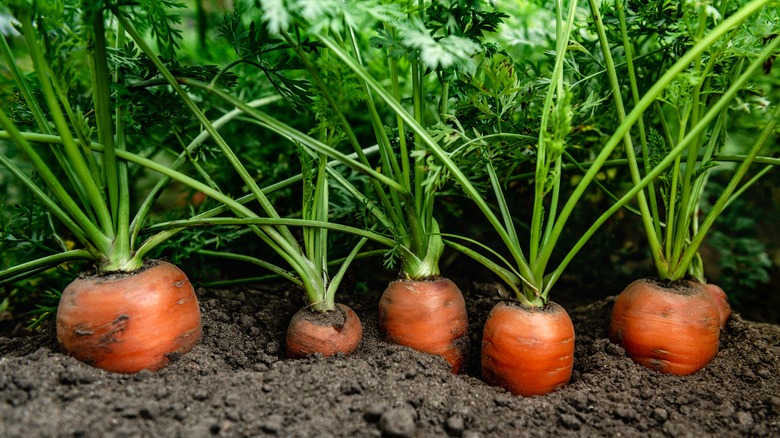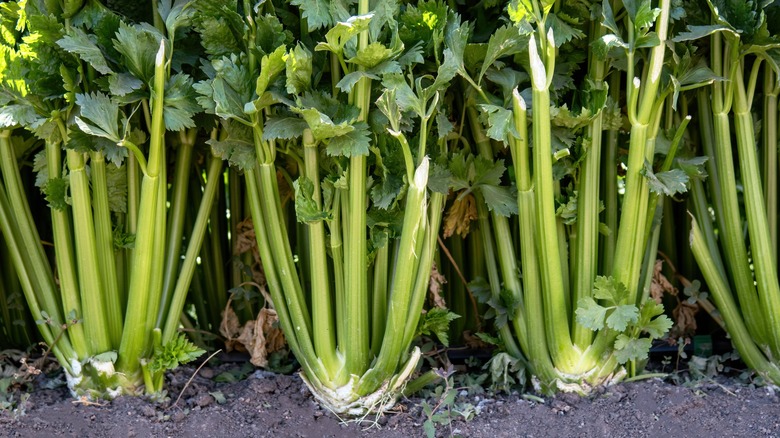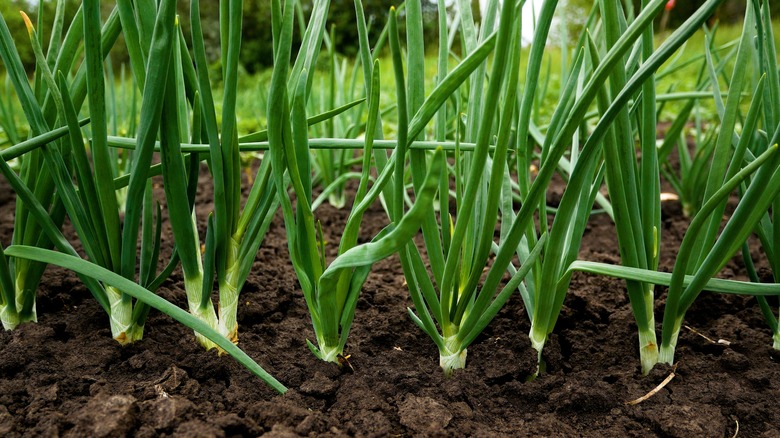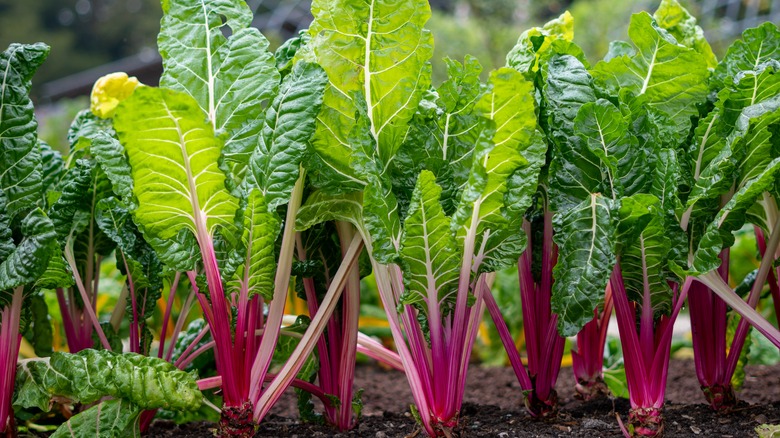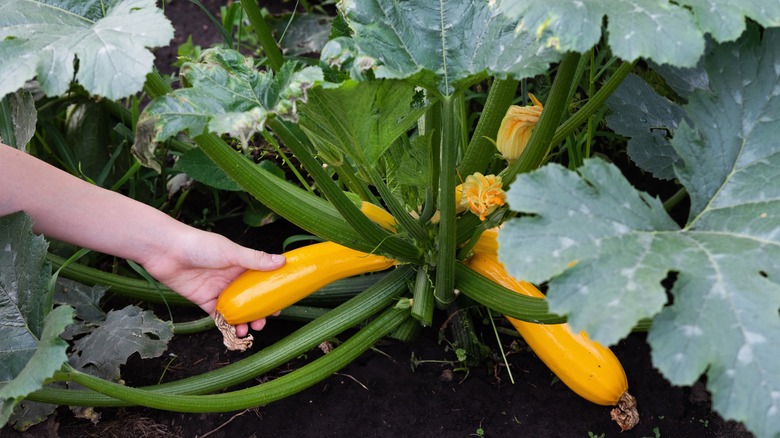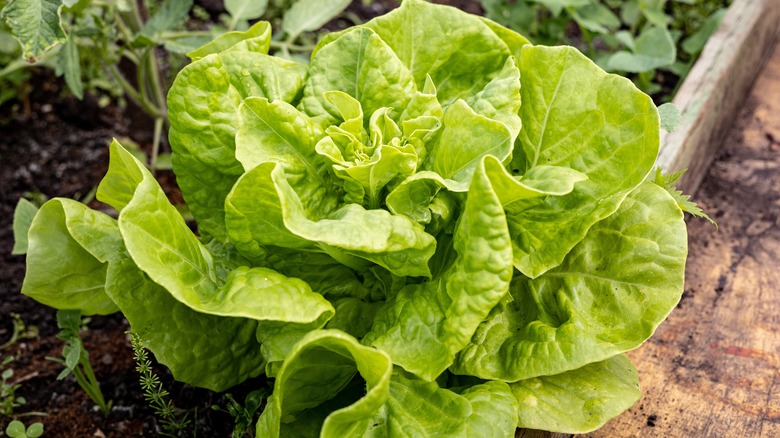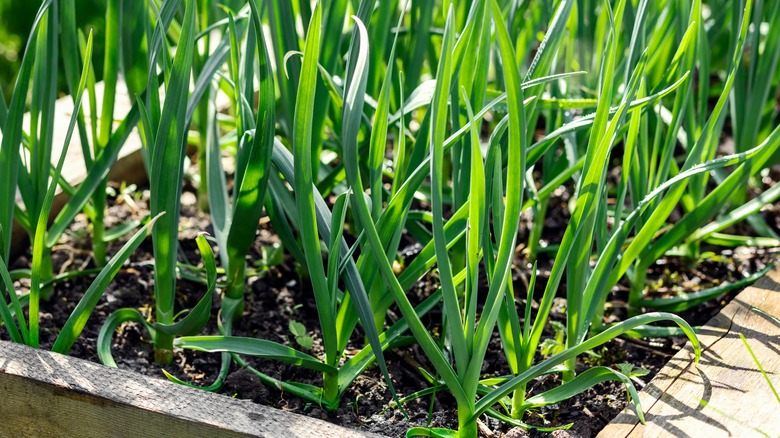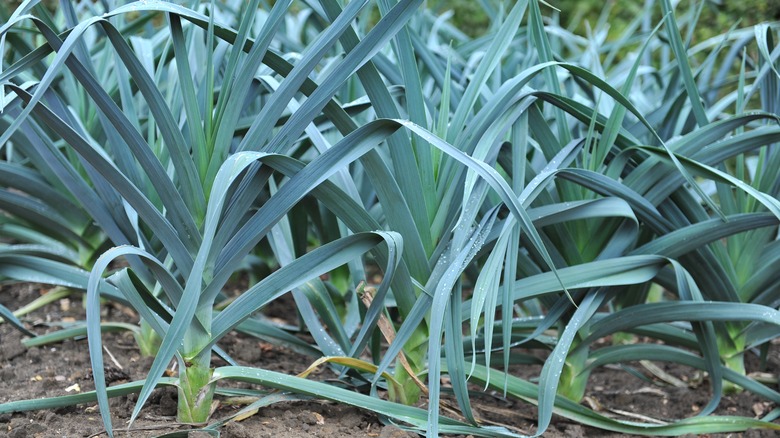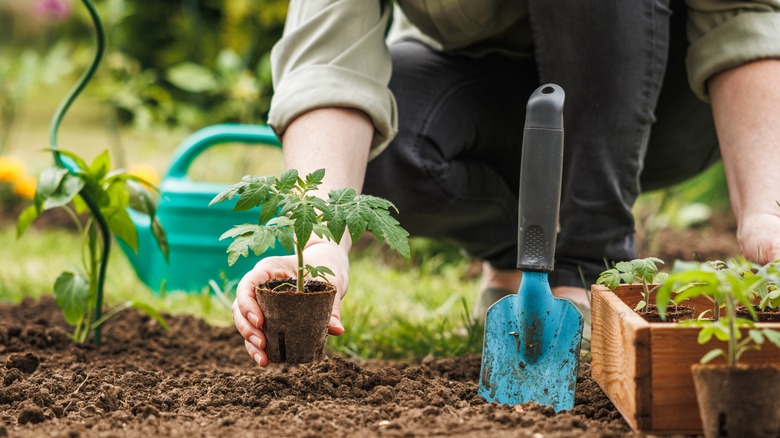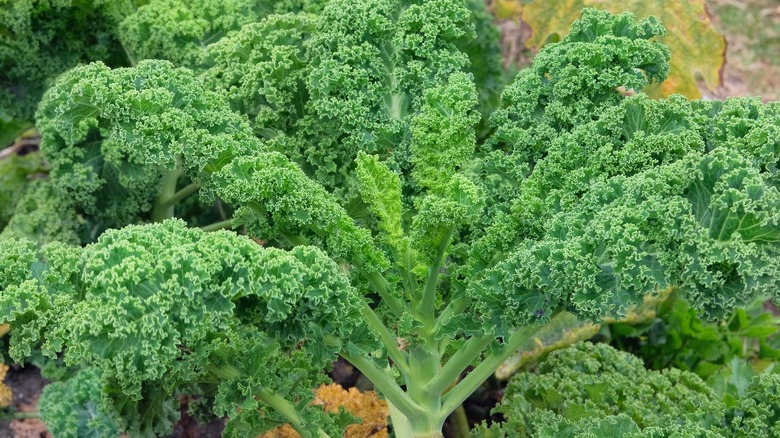16 Vegetables That Pair Well With Spinach In The Garden
Spinach is a wonderful crop to include in your garden because it's easy to grow and you can harvest as much as you need. If you plan to grow this leafy vegetable, you'll not only want to know how to harvest spinach for more growth, but also what vegetables to house beside it. Pairing different vegetable plants together is known as companion planting. Companion planting helps you to use your garden space effectively by pairing different plants that provide benefits to each other such as repelling certain pests. This can also help with soil health by pairing plants that have different root systems to make use of all the valuable nutrients that are available.
When considering the best plants to pair with spinach, you need to know what conditions they thrive in and select ones with similar conditions that won't compete for nutrients and moisture. For example, spinach needs lots of nitrogen for healthy growth, and legumes such as beans and peas have the ability to fix nitrogen into the soil. This means that they'll make good companions for spinach. Similarly, spinach has a fairly shallow root system so pairing it with plants like brassicas that have deep roots means that these plants won't be competing for the moisture and nutrients found in the same part of the soil. Here are 16 plants to pair with spinach in your garden.
Green beans
Green beans are legumes and these plants have the ability to fix nitrogen into the soil from the atmosphere so that it's available for other plants to use. They do this with the help of a bacteria known as rhizobia which attaches to the roots of the bean plants. The unusable nitrogen in the earth's atmosphere is absorbed by the plants and then the rhizobia bacteria convert it into a form of nitrogen that plants can easily absorb through their roots. This is beneficial to spinach plants that need plenty of nitrogen for healthy growth.
Broccoli
Broccoli is a great companion plant for spinach because it has a really deep root system unlike spinach which only has shallow roots. This means that the broccoli plants will be pulling water and nutrients from deeper within the soil while the spinach will be able to use the water and nutrients that are closer to the surface. Plus, as the broccoli plants start to grow, they'll also provide the spinach with a little extra shade and protection from the sun to lessen the likelihood of bolting too quickly.
Peas
Peas are also legumes so they have the same ability to fix nitrogen into the soil. You can grow any type of peas including sugar snap peas and snow peas. All pea varieties have the same root nodules that hold the rhizobia bacteria. Peas are also commonly grown on a trellis and can provide spinach with a little shade during the warmer part of the day. This should help stop your spinach from bolting. In fact, spinach is one of the perfect companion plants that will flourish beside your luscious peas.
Cabbage
Although cabbages are brassicas, they have a somewhat shallow root system, much like spinach. While you might think that this is not that beneficial, it actually is, because both plants require similar conditions and need plenty of moisture to grow and thrive. So if you have spinach and cabbage plants growing in the same garden bed, you'll easily be able to provide the plants the necessary moisture that they need. Plus, cabbages do take quite some time to mature which means you can harvest your spinach while waiting for your cabbages to be ready to harvest.
Radishes
Radishes are often grown in gardens as a trap crop because their leaves attract insects such as aphids, flea beetles, aphids, and slugs. This means that these pests will be busy eating the radish leaves rather than damaging your precious spinach leaves. On the bright side, your delicious radish roots will be unaffected and still edible. Both radish and spinach plants grow fairly quickly so they can be ready for harvest at the same time and they go together well in salads which also makes them ideal companions.
Cauliflower
Like broccoli, cauliflower plants also have a deep root system. This makes them good companions for spinach because the plants won't compete for water or nutrients. Cauliflower plants also grow quite tall which means that they can provide your spinach with some extra shade when needed. Plus, cauliflowers take quite some time grow (around 50 to 80 days from transplanting), so you can be happily harvesting your spinach leaves while you're waiting for those lovely cauliflower heads to form and grow until they're the perfect size for harvesting.
Carrots
Another root vegetable that pairs well with spinach is the humble carrot. Carrots have long taproots that grow down into the soil and help to improve the soil structure. Carrots are also known to attract beneficial insects such as ladybugs, lacewings, and damsel bugs. These are predatory insects that will feed on pests such as aphids which may be attracted to your luscious spinach leaves. Plus, grated carrots mixed with spinach leaves make a lovely refreshing salad. You could even throw in a few carrot tops because these are edible too.
Celery
Like spinach, celery prefers cool growing conditions which makes these two perfect companions. Celery also takes quite a long time to grow so you'll be harvesting your spinach long before your celery has reached maturity. In fact, celery can take up to four months before it's ready to be harvested. Both plants prefer moist soil and plenty of nitrogen for lush green growth. As a bonus, you can harvest celery stalks individually without removing the entire plant from the soil.
Onions
Onions are a favorite companion plant for many different vegetables including spinach. This is because onions are known to repel a variety of different garden pests that might be tempted to attack your spinach. But it should be noted that onions should not be planted near beans or peas because they will stunt the growth of the legumes. Another bonus of growing onions next to your spinach is that you can cut some of the green tops and use them in your cooking along with your spinach leaves.
Chard
Both spinach and chard are leafy greens, so it makes sense to grow them together. They both like plenty of moisture and nitrogen to produce their lovely leafy growth. Chard also has a much deeper root system than spinach, so it can absorb the nutrients that are deeper in the soil. As chard can grow quite tall, it will help to shade the smaller spinach plants to stop them from bolting too soon. While chard can also bolt, this will only happen in its second year of growth because it's a biennial plant.
Squash
Squash plants can get quite large but it does take them some time to grow (60 to 100 days), so you can make good use of your garden space by planting them next to your spinach plants. As the squash plants grow, they'll provide some shade for the spinach. Squash also has deep root systems and likes to be kept well-watered. The deep roots means that squash won't compete with spinach for water or nutrients closer to the surface of the soil.
Lettuce
Another useful green that you can grow alongside spinach is lettuce. Lettuce also likes similar growing conditions such as plenty of moisture and a good amount of nitrogen. But lettuce has another benefit when grown with spinach. As these plants usually grow low over the soil, they're fairly good at preventing weeds from sprouting up. You could try a selection of different head-forming and leaf lettuces to add variety to your salads along with the spinach leaves that you're harvesting.
Garlic
Like onions, garlic is said to repel certain pests from your garden with its pungent aroma. This includes aphids which might be attracted to your tender spinach leaves. It also takes up very little space and can easily be dotted around your spinach plants. By the time your garlic is ready to harvest, your spinach has probably bolted and it's time to plant some new crops. Plus, you can harvest some of bright green garlic leaves to use in your cooking while you're waiting for the bulbs to mature.
Leeks
Leeks are another member of the onion family, so they do have a noticeable odor that can help to deter pests. This also makes them a good companion for leafy greens such as spinach. It takes leeks some time to grow to maturity (120 to 150 days) which means growing them with spinach is a good use of your available garden space. Plus, they'll provide some shade for your spinach plants as they grow taller.
Tomatoes
While you wouldn't think that growing spinach and tomatoes together is beneficial because tomatoes love the heat and spinach prefers cooler conditions, there's a good reason to consider this pairing. It's all about using your garden space to its full capacity. Young tomato plants can easily be planted among your spinach while its still growing well and you're harvesting the leaves constantly. Once the tomatoes start to grow, the weather will have warmed up and your spinach will most likely bolt.
Kale
Spinach and kale are both cooler season crops so they pair well together. They're also both leafy greens and can be used in similar ways in the kitchen. Being leafy greens, spinach and kale both prefer plenty of moisture and lots of nitrogen for their growth. Planting these fairly close together will also help to shade the soil, thus preventing weeds seeds from germinating or weeds from growing and taking over your garden bed.
